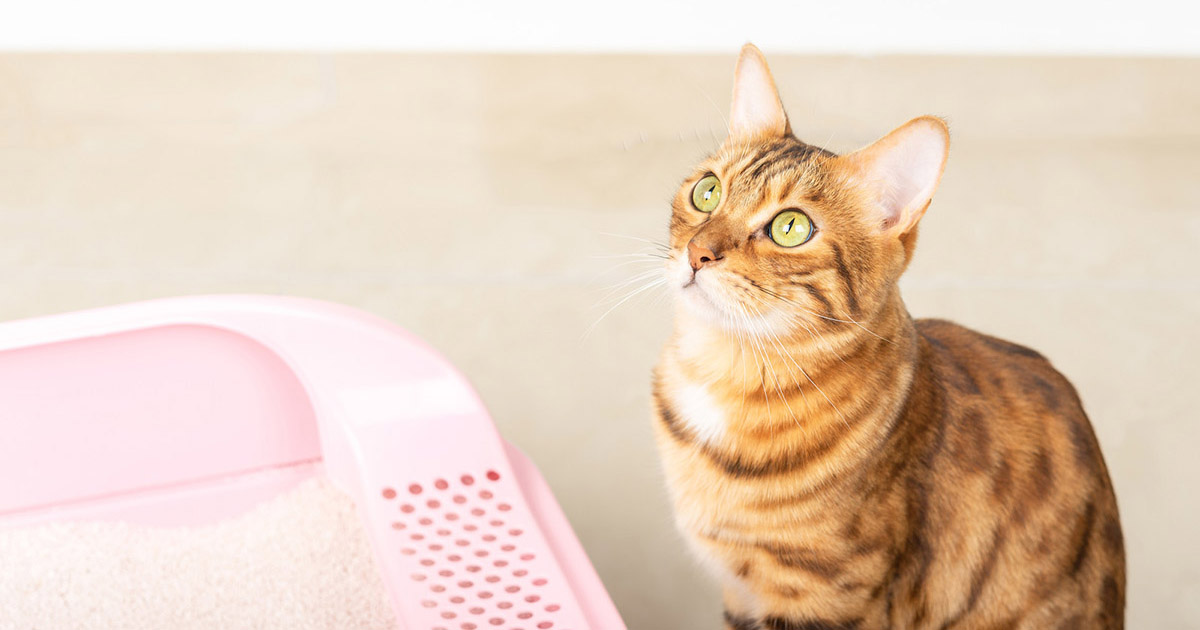Potential Risks of Flushing Cat Poop Down Your Toilet - Advice for Better Handling
Potential Risks of Flushing Cat Poop Down Your Toilet - Advice for Better Handling
Blog Article
Almost everyone will have their own unique way of thinking in relation to Don’t flush cat feces down the toilet.

Intro
As cat proprietors, it's essential to be mindful of just how we get rid of our feline pals' waste. While it may seem convenient to flush pet cat poop down the toilet, this practice can have damaging effects for both the setting and human health.
Environmental Impact
Flushing feline poop presents hazardous virus and bloodsuckers right into the water, posing a significant threat to water communities. These pollutants can adversely affect aquatic life and concession water top quality.
Health and wellness Risks
In addition to environmental problems, purging pet cat waste can likewise position health threats to human beings. Cat feces may contain Toxoplasma gondii, a parasite that can create toxoplasmosis-- a possibly serious health problem, especially for expectant women and individuals with weakened body immune systems.
Alternatives to Flushing
Fortunately, there are more secure and extra accountable ways to deal with cat poop. Consider the following options:
1. Scoop and Dispose in Trash
One of the most usual technique of getting rid of cat poop is to scoop it right into a naturally degradable bag and toss it in the garbage. Make sure to use a committed trash scoop and take care of the waste immediately.
2. Use Biodegradable Litter
Go with eco-friendly cat clutter made from materials such as corn or wheat. These litters are eco-friendly and can be safely taken care of in the trash.
3. Hide in the Yard
If you have a backyard, take into consideration burying cat waste in an assigned area far from vegetable yards and water sources. Make certain to dig deep sufficient to prevent contamination of groundwater.
4. Mount a Pet Waste Disposal System
Invest in a pet dog waste disposal system specifically created for cat waste. These systems utilize enzymes to break down the waste, reducing smell and environmental influence.
Final thought
Liable animal possession extends past providing food and sanctuary-- it additionally includes correct waste management. By avoiding flushing feline poop down the commode and choosing alternate disposal approaches, we can reduce our ecological footprint and safeguard human wellness.
Why Can’t I Flush Cat Poop?
It Spreads a Parasite
Cats are frequently infected with a parasite called toxoplasma gondii. The parasite causes an infection called toxoplasmosis. It is usually harmless to cats. The parasite only uses cat poop as a host for its eggs. Otherwise, the cat’s immune system usually keeps the infection at low enough levels to maintain its own health. But it does not stop the develop of eggs. These eggs are tiny and surprisingly tough. They may survive for a year before they begin to grow. But that’s the problem.
Our wastewater system is not designed to deal with toxoplasmosis eggs. Instead, most eggs will flush from your toilet into sewers and wastewater management plants. After the sewage is treated for many other harmful things in it, it is typically released into local rivers, lakes, or oceans. Here, the toxoplasmosis eggs can find new hosts, including starfish, crabs, otters, and many other wildlife. For many, this is a significant risk to their health. Toxoplasmosis can also end up infecting water sources that are important for agriculture, which means our deer, pigs, and sheep can get infected too.
Is There Risk to Humans?
There can be a risk to human life from flushing cat poop down the toilet. If you do so, the parasites from your cat’s poop can end up in shellfish, game animals, or livestock. If this meat is then served raw or undercooked, the people who eat it can get sick.
In fact, according to the CDC, 40 million people in the United States are infected with toxoplasma gondii. They get it from exposure to infected seafood, or from some kind of cat poop contamination, like drinking from a stream that is contaminated or touching anything that has come into contact with cat poop. That includes just cleaning a cat litter box.
Most people who get infected with these parasites will not develop any symptoms. However, for pregnant women or for those with compromised immune systems, the parasite can cause severe health problems.
How to Handle Cat Poop
The best way to handle cat poop is actually to clean the box more often. The eggs that the parasite sheds will not become active until one to five days after the cat poops. That means that if you clean daily, you’re much less likely to come into direct contact with infectious eggs.
That said, always dispose of cat poop in the garbage and not down the toilet. Wash your hands before and after you clean the litter box, and bring the bag of poop right outside to your garbage bins.
https://trenchlesssolutionsusa.com/why-cant-i-flush-cat-poop/

We were shown that write-up on Don’t flush cat feces down the toilet from a friend on a different web address. In case you enjoyed our page if you please do not forget to share it. Kudos for your time. Kindly stop by our blog back soon.
Need Help? Hire Us Now! Report this page